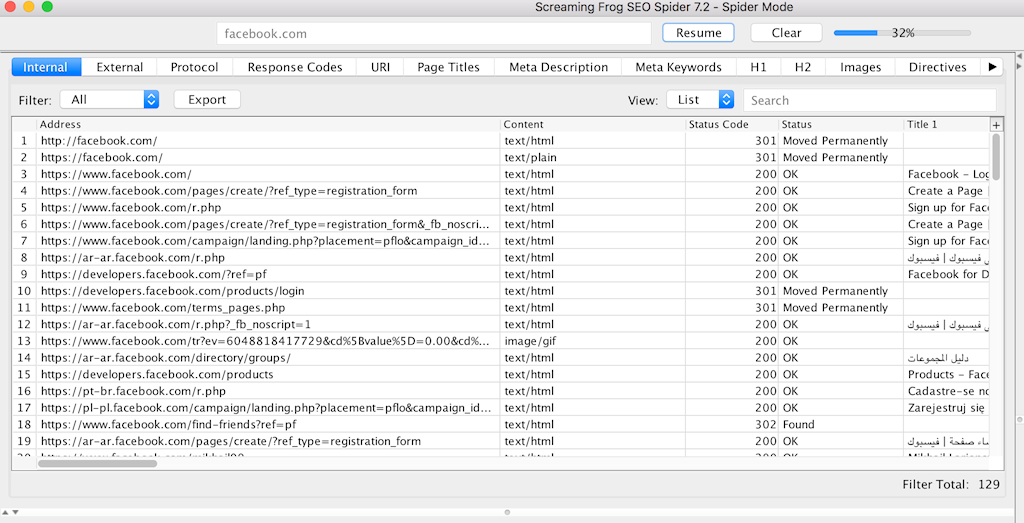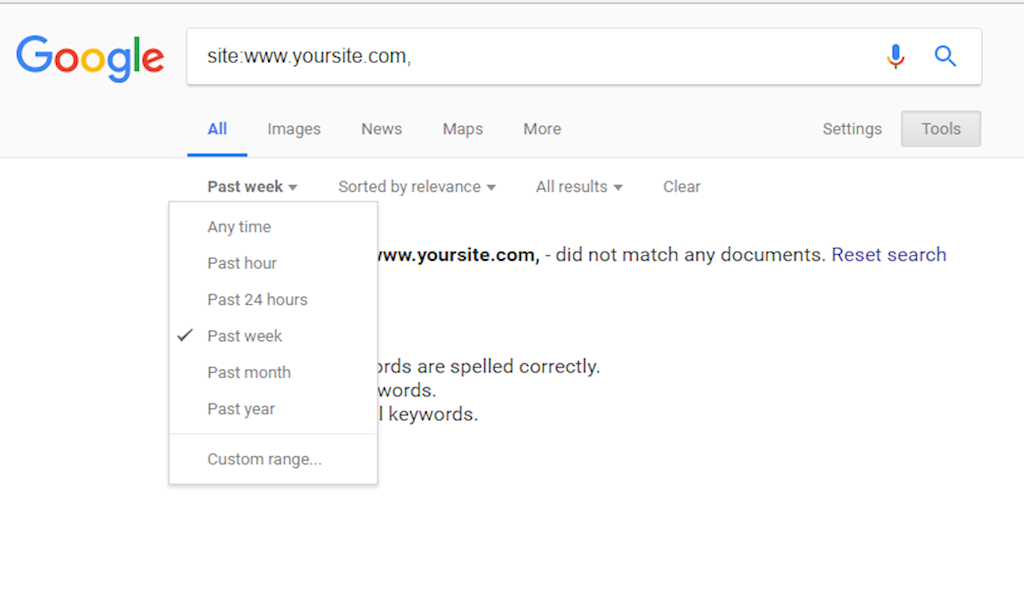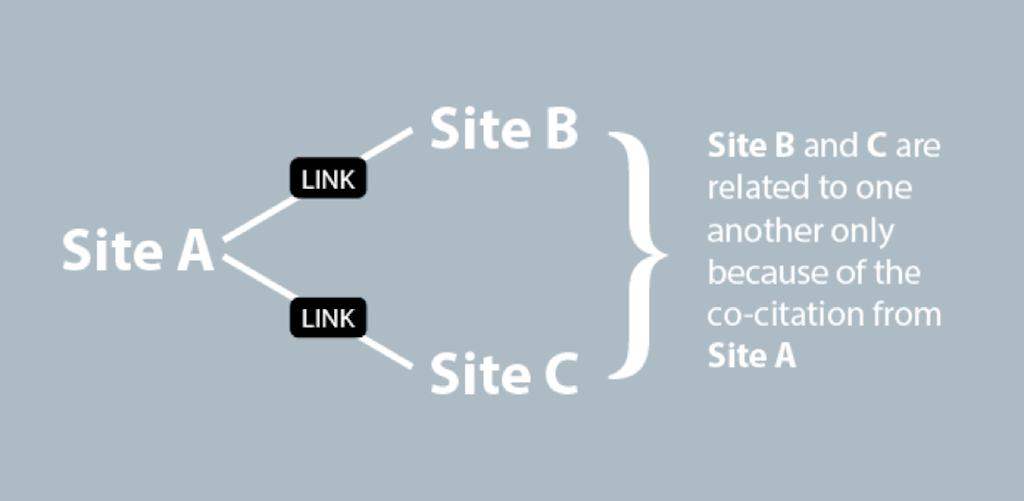In part 1 of our comprehensive guide to an SEO audit, we looked at the technical side of a full SEO audit.
This included how to use tools such as Google Search Console to perform Server Error Checks, 404 Handling Errors and XML Sitemaps.
In this, part 2, of our ultimate guide, we’re going to move on to the next stage of a full SEO audit: the on-page audit.
On-Page Audit
A comprehensive on-page or content audit should produce a list of all pages of the website in a spreadsheet, with detailed data on each page. Hence, the choice of whether or not to produce such an audit will depend on:
- The size of the website
- The client’s needs
- The goal of the audit
- The cost of the audit
Screaming Frog SEO Spider is the most effective tool for content audits, especially for page-by-page analysis. You can perform this audit on any website.

Menu Navigation
The layout and functionality of the main navigation are critical to SEO as they influence user experience. Hence, the site’s main navigation should be:
- Comprehensive – It should get to the site’s main sections with two clicks at most.
- Simple – A navigation menu with more than seven main features begins to overwhelm the brain.
- Logically arranged – Function over style here please! Artistic navigation menus normally don’t make sense.
- Keyword-focused – It is advisable to include an obvious keyword focus in the menu navigation. However, don’t stuff every navigation element with a huge long-tail keyword.
Footer Navigation
You need to ensure that the site’s footer navigation (if it exists) is:
- Useful – It should provide access to the site’s most important pages.
- Logical – It should follow the main navigation’s pattern.
- Strategic – The footer is normally the best place to display business contact information.
URL Analysis
URLs play an integral role in SEO due to the fact that they are the path that search engines follow. Hence, you should include the right keywords in the URL.
The URL should also capture what the web page is about. Check URLs to ensure they:
- Contain relevant keywords
- Are succinct
- Are neat and symbol-free
- Have no capitalization, which can create confusion and traffic deviancy
- Have dashes, instead of underscores, to separate words.
NAP Presence
Any business with a local presence needs to have NAP presence - Name, Address, and Phone Number - on its website, especially in the header and footer.
You should integrate maps and relevant local keywords in a bid to improve user experience and achieve keyword relevance for local searches. Likewise, it is imperative that the NAP is consistent in all its online occurrences and mentions. Consider using Moz Local to ensure the consistency of your NAP.
HTML Sitemap
A HTML sitemap presents an excellent way to create a strong website structure and complete indexation of the website’s content. It should be just a single click away from any of the website’s pages. In that light, you should put it in the footer.
Breadcrumbs
If your site has breadcrumbs, run a quick scan to make sure they are relevant and functional. In addition to providing a chance for schema markup, breadcrumbs are beneficial for navigation, provided they convey the true position of the page in the overall website structure.
Main Page Content
The homepage is the site’s most-visited page so the main content page needs the best of SEO care. You should check the page to ensure:
- It targets the right long-tail keywords for its industry.
- It includes sufficient concentration of the keyword.
- It has sufficient content. A homepage should have at least 400 words of optimized content.
Consistent and Frequent Content Production
You should produce content regularly for your site to remain competitive. In fact, websites updated every week or more frequently maintain good content publication velocity. This keeps them actively indexed and ranked.
To check how Google is indexing your content, just perform this Google query:
site:[your URL]
And then click:
“search tools,” > “anytime” > “past week” (or any other timeframe).

Page-by-page Analysis
Now, you need to delve deep into each page of the site. To make it easy, consider creating a checklist, like the following:
- Page Title – The page should not only have a title, but the title should be within the standard length of 30-35 characters, relevant, and include keywords. Also, ensure there is consistency in how the title is set, including the symbols used.
- Meta description – Check if the page has a meta description and whether it is of the right length and engaging for users.
- H1- Check if the page has an H1 and ensure it is relevant and optimized.
- Keyword focus and representation – Normally, it is important for every page to have a unique keyword focus, with the keyword occurring on the page with sufficient frequency and semantic variety.
- Copy – The page should have enough copy, and the copy reflecting the page’s keyword focus.
- Visual and interactive content – Make sure the page has relevant and engaging imagery and the videos are playing. Also, there should be functional interactive elements.
- Alt tags – Images should be optimized with correct filenames and tagged with relevant keywords.
- Internal linking – The page should have at least one internal contextual link. In fact, a website with strong internal linking plays an integral role in creating a website with sturdy internal architecture.
- Last updated – Frequently changed pages normally rank higher. Hence, consider revising pages that haven’t been updated in at least one year.
- Broken links – No page should have broken links.
- Authority – It is good for the pages to be written by copywriters who have refined knowledge of the content.
- Unique content – Content on each page should not be duplicated elsewhere on the site, including H1s and title tags. Likewise, the content should not be copied from external sites. Otherwise, you may suffer duplicate content penalization.
- Ads – Ads may overshadow the purpose of the site and undermine user experience unless the site’s main goal is Ad revenue.
- Bounce rates – The main pages’ bounce rates should not be too high or too low.
- Layout and Readability – Be sure that content width, kerning, as well as font type, size, and color all translate to improved site layout and readability.
- Outbound links – Linking out to authoritative websites can enhance your website’s co-citation and co-occurrence.

Source: Search Engine Journal
- Overall value – The page should deliver value to the user. If it serves a purpose or provides solutions to a problem, then it’s definitely valuable. Otherwise, it should be revised.
- Call to action – If further action is expected, the page should include appropriate CTAs, which encourage the user to take the next desirable step.
The steps listed here will help you to create a stronger on-page SEO presence and help to boost your Google rankings and site visibility.
This blog post is part of a 3-part series, you can read parts 1 and 3 here:
Access the latest business knowledge in Marketing
Get Access



![How to Make Use of SEO in 2018 [Infographic]](/getmedia/e6694a84-de6b-46a6-b01d-a69eed90e9c1/how-to-make-use-of-seo.jpg?maxsidesize=350&resizemode=force)

Comments
Join the conversation...